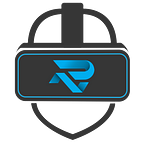AR/VR Revolutionizing the Automobile Industry
Buying an automobile can be strenuous, whether it is fancying a model or choosing the right interior — especially viewing the plethora of options available. With recent advancements in AR and VR, the automobile industry is staring at immersive technologies to help them overcome these challenges in an affordable and scalable way.
Brands in the Automotive Industry are under ceaseless obligation to reduce time-to-market, overcome cost, and enhance the quality of the product. Given these demands, Automotive Industry is using VR/AR pertinence across the product life cycle — Design, Production to Deals & Marketing.
VR use cases in the automobile industry
A car often exhibits an individual’s character. As previously stated, with the help of AR/VR, automotive companies are now equipped to create a more personalized retailing platform for their customers. Immersive reality can help businesses form a deeper sentimental kinship with their clients.
1. Virtual Car Simulation
It is a superior driver aid system bulging real-time erudition to help a driver stay more focused. This data is exposed to the windshield and generally consists of warning signals, speed, engine status, navigation, and more. Although many carmakers have previously implemented this technology, its full potential is yet to be unleashed.
The most prominent edge of this technology is that the stereoscopic image can fix the driver’s viewing angle. Navigational information, directions, and signals can now be grasped by drivers as a part of the road. This will most aptly have a literal impact on security because drivers won’t be distracted by other sources of information from phones or built-in screens.
2. Immersive Showrooming
Opening a car dealership is a vital but rather high-priced move. The aggregate cost of furniture, rent, demo cars, inventory, and paychecks make it merely a viable venture, notably for smaller carmakers. Nevertheless, R technologies permit car retailers to subdue the showroom size, cut costs, and intensify customer encounter all at the same time.
When in a virtual showroom, clients can sit on a seat that simulates a real car chair and get a real-time sense of driving this particular car. Moreover, a buyer can change the car’s contour or color in a matter of seconds by themselves.
3. Virtual Prototyping
Many alterations and late disclosure of design flaws are amid the major predicaments in acquiring a new car model. Building a new prototype is often costly and time-consuming. However virtual prototyping is commonly used by all the preeminent car manufacturers, VR exerts this approach to the next level.
It helps both drafting and engineering units better fabricate prototypes in terms of capacity and size, and get a more precise view of how all vehicle parts are equated. This improves the chances to detect conception errors earlier, and better understand if there are faulty connections between vehicle parts.
AR use cases in the automobile industry
AR is on its way to reconstruct the employee training process in the automobile industry as well. AR tools allow new agents to be completely immersed in the rendering process without any risks.
Adopting AR for Self-Servicing
The exceptional thing about augmented reality is that it allows users to associate with the real-world using tech-supported graphics. For things that can be easily resolved without troubling a mechanic, operators can provide this technology for self-service. It could be for more intricate tasks, like making sure that all of the installations are properly configured under the shade or simple ones like how to put wrap-around washer fluid in your new car. Even if it is something the customer can’t fix without going to the mechanic, clients can also use AR to get an idea of what is wrong with the vehicle before taking it in. This will make the relationship between manufacturers and the customer more transparent.
Conclusion
VR and AR can assist car companies cut the time-to-market and require costs for designing and welding vehicles. Used for training, the immersive technology enables car brands to exceedingly speed up and advance the training process and, as a result, boost their productivity.
Moreover, car dealerships can double their values by conceding customers in immersive reality to customize their dream car and then safely test-drive it. Our immersive technology can also significantly cut time to market for self-driving-cars by speeding up its safety system testing.
In other terms, the automotive industry can significantly serve virtual reality and augmented reality by employing this technology for several use cases.
VR | AR | MR is the world’s fastest-growing Virtual Reality and Augmented Reality company. We employ cutting-edge immersive technology to advance service technician tools, assistance in skills training, and provide remote services to Businesses, Anytime, Anywhere.
For more similar solutions specific to your industry visit www.mrarvr.in
or contact us at ashutosh@mrarvr.in
